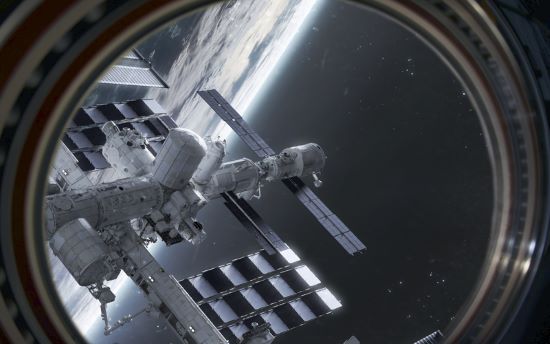In the latest news from the massive International Space Station (ISS), the risks to its continued viability are mounting. ISS costs NASA between US $3 and 4 billion annually of which operations and maintenance take up $1 billion. Crew transportation and supply costs equal $1.7 billion. Research comes in at $350 million.
For NASA’s human space flight operations, ISS represents less than half the money currently being spent on the Artemis Program annually. In 2024 that budget is $7.5 billion.
NASA’s other big off-world space line items include the James Webb Space Telescope operations annual cost of $175 million, the Mars Exploration Program with Perseverance operations at $150 million each year, and Curiosity at $62 million.
The other big line item is the NASA Earth Science Program with an annual budget of $2 billion.
The ISS End Date Could Come Sooner Than 2030
The current plan is to extend the ISS to 2030. NASA recently awarded SpaceX a contract to de-orbit the space station sometime in 2031. However, many new concerns suggest the ISS may not last until 2030 let alone see its mission extended into the next decade as some at NASA have proposed.
The ISS was built between 1998 and 2011 and has been continuously occupied since 2000. Today, fewer modules are being added. The core of the station consisting of a Russian and U.S. section is showing its age.
Roscosmos, the Russian space agency, has documented 50 areas of concern and 4 cracks in its section. The cracks have NASA and Roscosmos agreeing to seal off a segment leaving its hatch open only during critical operations. Roscosmos has its cosmonauts applying sealant and patches but leaks continue with April 2024 seeing the highest amount to date. Extensive patching over the summer has reduced the volume.
The current ISS crew complement is 11 although traditionally, the space station has 7 on board. The Soyuz spacecraft can accommodate 3 in an emergency. Dragon can accommodate up to 7. The capacity based on those two is insufficient to rescue all 11. If Boeing’s Starliner with a capacity for four were available that would cover all crew members. Today, being one short, however, means one member of the current crew in a critical emergency would be left behind like in Andy Weir’s novel, The Martian.
Further complicating an emergency rescue is incompatible space suit designs. American astronauts reaching the ISS riding in a Soyuz use Russian-designed suits. Russians riding on Dragon wear suits designed by SpaceX. Starliner has its Boeing-designed suits. None are interchangeable. Creating interoperability for crew rescue is a need that has yet to be demonstrated when you consider the recent Starliner test flight mission where two astronauts supposed to go home in two weeks on their spacecraft are now stuck on the ISS for more than half a year until they can get the right gear to go home on Dragon.
Another part of the ISS problem is the way it has been built. It has been cobbled together by joining modules sent into orbit. Every joint represents a potential point of failure. The stresses of flight in the near vacuum of space have caused significant wear and tear. Considering that the ISS has operated a decade longer than the original plan, it shouldn’t be a surprise that parts are wearing out and cracks are appearing. In a recent audit, NASA identified 588 parts in need of replacement, most having exceeded their operational lifetimes and many no longer being manufactured.
Russia and the Future of the ISS
Geopolitics is also impacting the ISS. The Russians after invading Ukraine in 2022 threatened to leave the station in 2025 when the country received negative reactions from Western-aligned countries, NASA, the European Space Agency (ESA), the Japan Aerospace Exploration Agency (JAXA) and the Canadian Space Agency (CSA), all ISS partners. Since that first announcement, Russia has extended its departure date to 2028. It has also made several other space announcements including one to build and launch a go-it-alone space station, and another to partner with China on a station. Other ISS partners remain committed to the 2030 date.
An early Russian departure could cripple ISS. Its propulsion control system is operated by the Russians and is located in their section. The propulsion system affects station reboost to keep it at an optimal altitude. It also provides attitude control for spacecraft docking and debris avoidance maneuvers. NASA tested a reboost contingency in June 2022 using the Cygnus resupply capsule from Northrop Grumman. Dragon capsules could potentially provide ISS propulsion control.
ISS Structural Integrity and Replacement Challenges
The ageing station will continue to require its crews to spend even more time doing maintenance and repairs as the decade continues. Continued structural integrity remains a problem particularly related to the Russian segments. Replacement parts are getting harder to find. Onboard 3D printing could help keep the ISS patched.
The replacement plan involves commercial space stations. NASA has four companies working on space station projects under its Commercial LEO Destinations (CLD) Program. Axiom Space, Blue Origin, NanoRacks and Northrop Grumman have received agency money to develop plans for ISS commercial replacements. Getting them from the planning to the built stage will require far more money than the initial seed capital NASA has put into the CLD Program to date. For NASA to avoid a LEO (Low Earth Orbit) gap similar to the one that occurred after the Space Shuttle Program ended, commercial partners will need assurances that the ISS end date is written in stone. Otherwise, the incentive to build a replacement and the fundraising to make it possible will be compromised.
The ISS has never been a for-profit venture. Commercial space station replacements will have to be. That means attracting paying customers including government space agencies and companies to become tenants will be paramount. These stations cannot rely on income from space tourism. They will need anchor tenants.
SpaceX may have plans to replace the ISS using Starships that can become space stations in LEO. This may be a lower-cost option than building and operating commercial alternatives.
The end-of-life timeline for the ISS is getting shorter. The station is showing its age. The risks of keeping it are increasing. NASA and its space agency partners need better contingencies to deal with emergencies and a concrete long-term plan for future activity in LEO. Right now, none of this appears to be in place.








